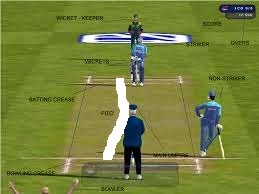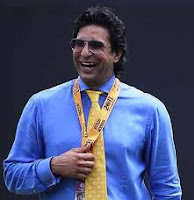By Vikram Afzulpurkar
9th April 2014
The T20 World Cup final 2014 between India and Sri Lanka won by the latter made these larger impressions on people:
- · Sri Lanka was always a good team and this time got revenge
- · India was just too good for themselves until this time and suffered cramps
- · Sri Lanka bowled stupendously frugal from overs 17-20 and choked India at an unexpected time
A victorious team Lanka did things just right
|
All quite true and we can add more points. However, let’s analyse what lessons will emerge from a team management, that is, coaching strategy point of view, from this experience in particular. The issue may be more of communication and whether some vital points are being missed out even as we all remain certain that all staff put in their best.
Picture this – okay, 130 has been the small total India has put up. Not enough but anyhow, these things happen and after all there is the ‘curse of small totals’ which may have played psychologically on the Sri Lankans; As if to remind us of this, MS Dhoni the Indian skipper said before the start of the match that if his team were chasing, he would not be worried too much about a
Team think tanks can spell out bullet point strategies. Were these done?
|
total of 160 or more, nor of something in the 90s or just about 100 if indeed such was to be the case. This sidelight may have bypassed us as our attention turned to the match which was to resume in 5 minutes from then!
Let’s not dwell on the Yuvraj struggling scenario (these things happen) and also MS Dhoni’s equal struggle. The bowling at that stage was just brilliant and while we praise execution easily, what about the strategy? It must have been masterful, given that two or more bowlers were able to execute it well.
Let’s move to the business end, when India started to bowl and defend the total. Well, their line and strategy too was immaculate and the results started to show as top order wickets fell at consistent intervals even as the score progressed comfortably for the Sri Lankans.
Mishra strayed down leg
|
Amit Mishra seems to have been well advised to stop experimenting with faster balls (at least for the larger part), a mistake which saw him give away many runs in the semi-final against South Africa. He also maintained a steady line even to the left handers. The message given to Ashwin may not have been too specific to a general line to bowl to (off or outside off stump, as an example) probably because he was now recognised as India’s main wicket taking bowler; it might have been assumed he would know his part or at least be allowed to back instinct to bowl ‘wicket taking balls.’ He therefore bowled quite a few balls on leg stump especially to the left handers and while bowling from around
What license did Ashwin have to justify leg side bowling?
|
the stumps on occasions. This may not have been the best strategy as the resulting boundaries from those deliveries turned the tide. Things needed to be kept frugal even at the cost of regimenting our bowlers and reducing them to labourers who had been given instructions. The only point in favour of this ‘straying line’ may be MS Dhoni’s gamble of Sangakkara probably sweeping to the deep aerially and getting caught out.
Many balls bowled 'down leg' by Indian spinners leaked runs
|
Mishra too bowled many balls outside leg stump, apart from the wides which are testimony to his straying anyway. These other balls were promptly dispatched for boundaries. What was perhaps lacking from the team vision and coaching was the need for something we call negative re-inforcement.
Sure, we spend time telling bowlers and fielders what to do within a wide scope of developments, meaning positive re-inforcement. However, do we ‘communicate’ the ‘what not to do?’ This would have to been the bowling down legside, something that simply should not be allowed to happen as it leaks vital runs in
defending a small total. That is negative re-inforcement and if one understands training mechanisms, it is simply not the negative or frilly thing it sounds like! It may just have won us this match if practised.
Negative reinforcement is a 'positive'
|
Corporates too train with negative reinforcement modules
|
Easier to speak in hindsight but this is not a complaint. It’s a hope that this may have made India wiser in future matches with so much at stake!
































